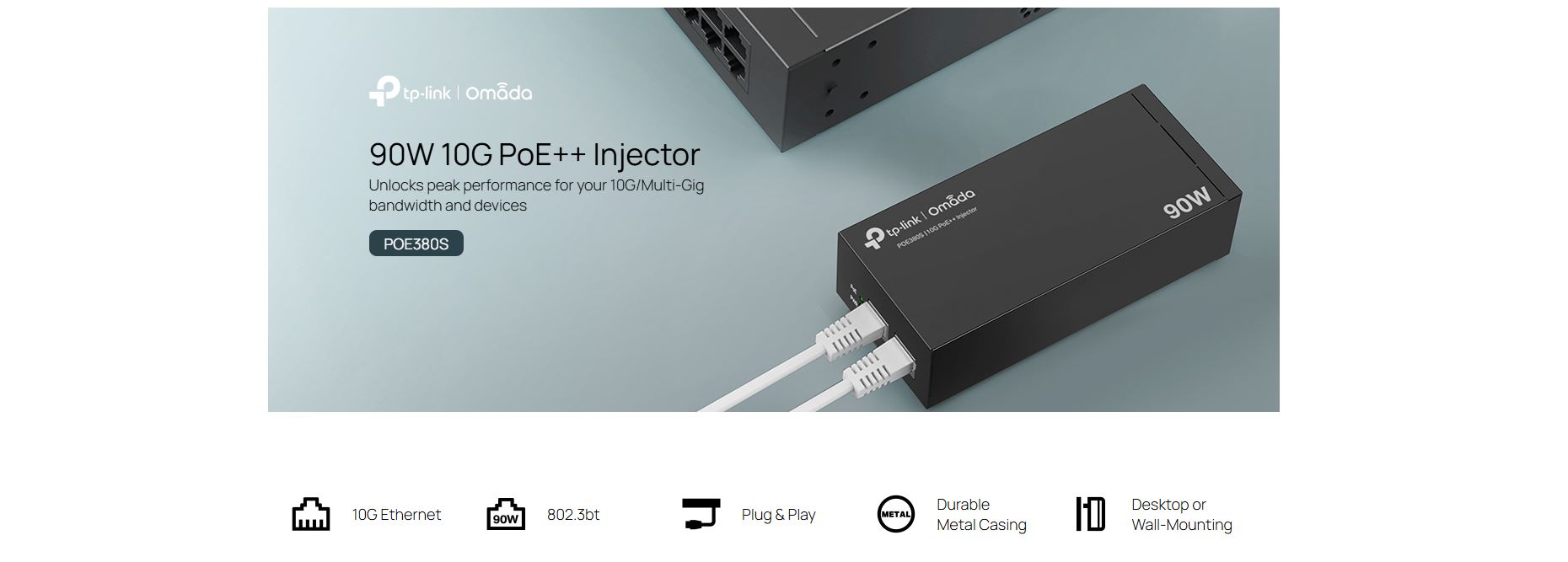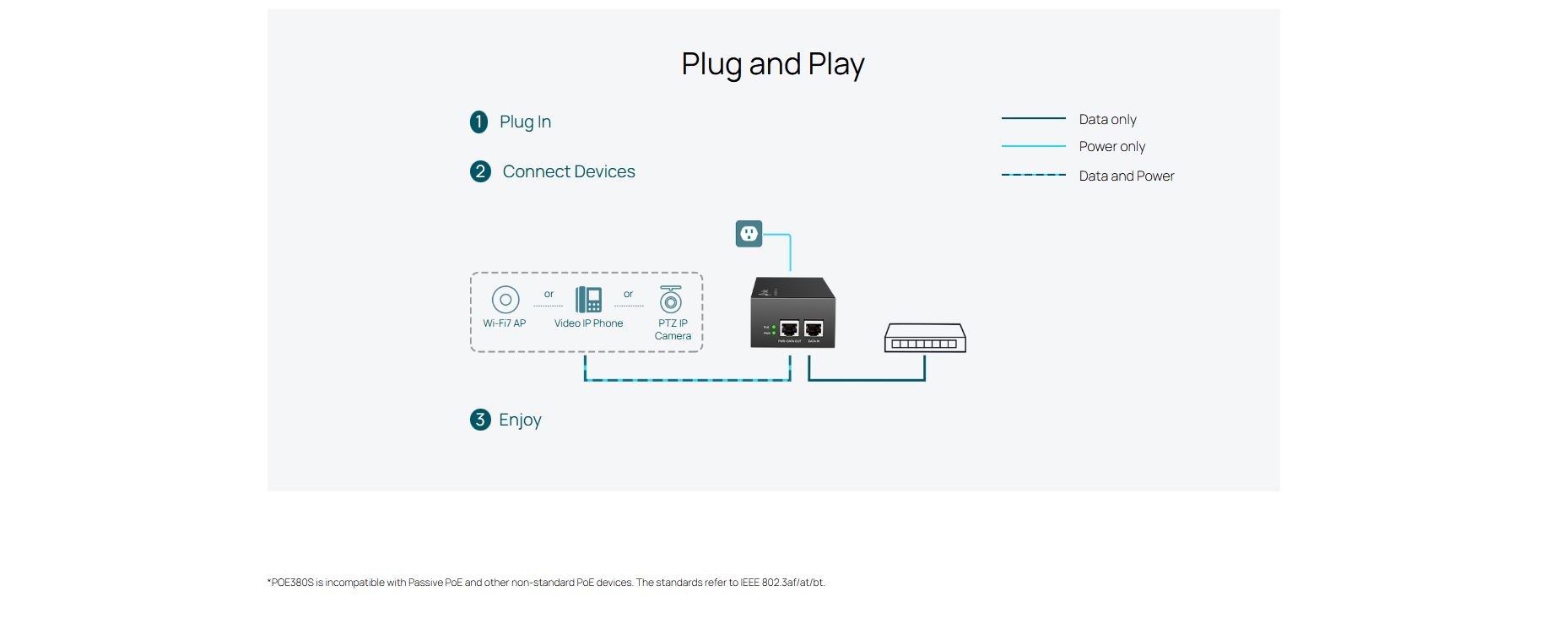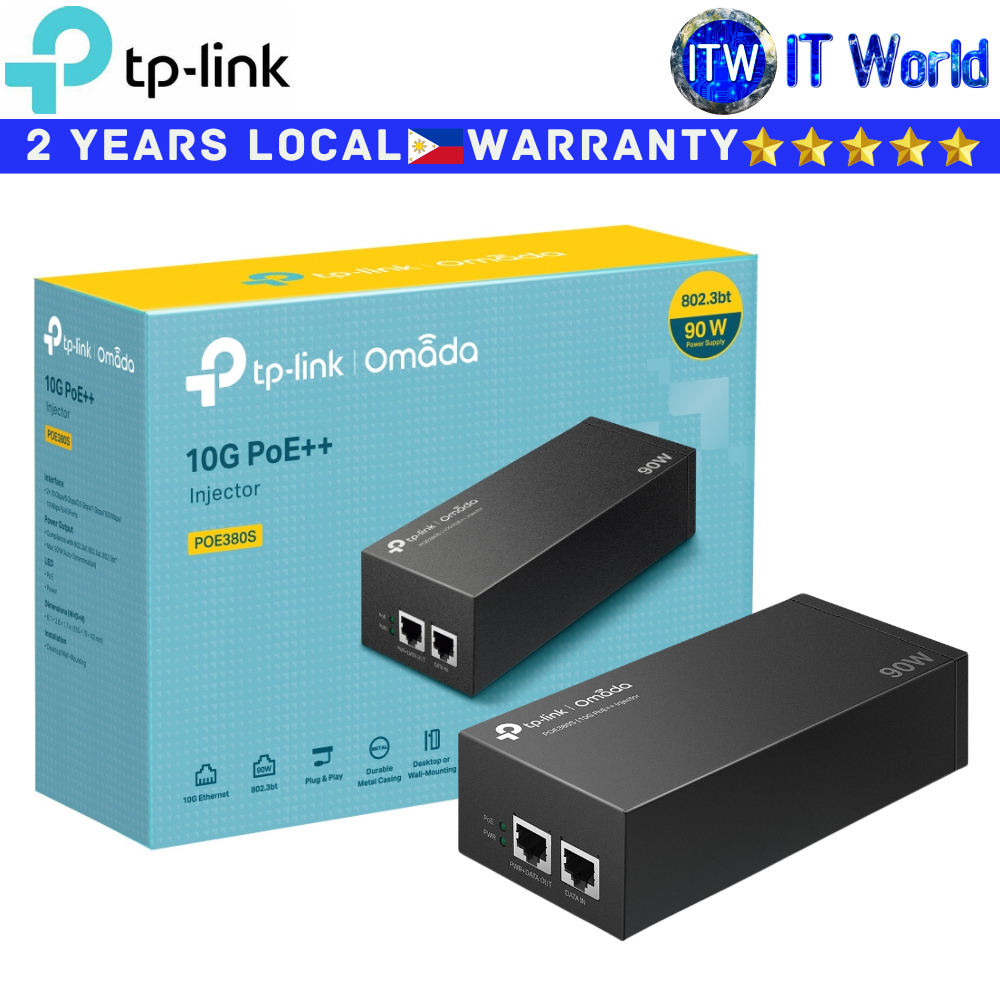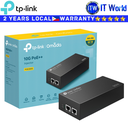Product Name: Itw | TP-Link PoE++ Injector POE380S Omada Plug & Play Durable Metal Casing Integrated Power Supply
Omada PoE++ Injector
> 2× 10 Gbps/5 Gbps/2.5 Gbps/1 Gbps/100 Mbps/10 Mbps RJ45 ports ensure faster transmission
> Complies with IEEE802.3af/at/bt standards, supplies up to 90 W
> Reduces infrastructure costs by transmitting data and power simultaneously via an Ethernet cable
> Automatically determines and supplies the exact power to meet the device's need
> Wall-mounting and desktop design accommodates most installation scenarios
> Plug & Play installation, no configuration required
> Integrated power supply
> Durable metal casing
Specification
Hardware
* Standards and Protocols: IEEE802.3i, IEEE802.3u, IEEE802.3ab, IEEE802.3af, IEEE802.3at, IEEE802.3bt*
* Network Media
> 10BASE-T: UTP category 3, 4, 5 cable (maximum 100m)
- EIA/TIA-568 100Ω STP (maximum 100m)
> 100BASE-TX: UTP category 5, 5e cable (maximum 100m)
- EIA/TIA-568 100Ω STP (maximum 100m)
> 1000BASE-T: UTP category 5, 5e, 6 cable(maximum 100m)
* Ports
> 1× 10 Gbps/5Gbps/2.5Gbps/1Gbps/100Mbps/10Mbps RJ45 data-in port
> 1× 10 Gbps/5Gbps/2.5Gbps/1Gbps/100Mbps/10Mbps RJ45 power+data-out port (Max. 90W)
> 1× AC socket
* Power Consumption
> Input: 100-240 V, 50/60 Hz, 1.6A
> Output: Auto-determine the necessary power requirements (max. 90W)
* Basic Function
> Auto-Sensing Algorithm enables providing power with 802.3af/at/bt* PD
> Auto-determine the necessary power requirements
> Wall-mounting and desktop installation
> Plug-and-Play
* LED: Power / PoE
* Dimensions (WxDxH): 6.1*2.8*1.7in (155*70*42mm)
Others
* Certification: FCC, CE, RoHS
* Package Contents
> POE380S
> Power Cord
> Installation Guide
* Environment
> Operating Temperature: 0°C to 45°C (32°F to 113°F)
> Storage Temperature: -40°C to 70°C (-40°F to 158°F)
> Operating Humidity: 10% to 90%RH non-condensing
> Storage Humidity: 5% to 90%RH non-condensing





*** Reminders:
1. Take a video of yourself while unboxing the parcel. This would serve as proof if you have concerns with the parcel.
2. Ask the delivery rider to present a valid ID (e.g., driver’s license, UMID) and/or take a picture of the delivery rider with your payment.



